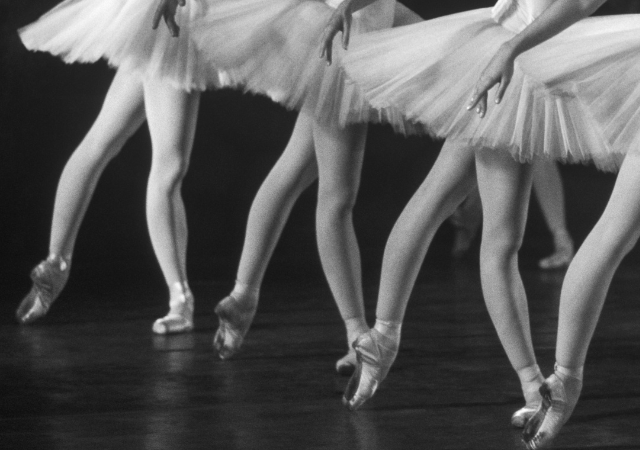
Paris has never been so close to the blinding spotlights of Broadway as when the iconic American figure, Jerome Robbins, received an invitation to L'Opéra de Paris, courtesy of George Balanchine and Rudolph Nureyev. Even today, more than half a century later, the impact of Jerome Robbins' artistry, his cherished friendships, and the sheer delight he brought to Paris continue to radiate brightly. In the 1970s and 1980s, few luminaries could outshine Robbins in the vibrant French capital. He developed a deep attachment to l’Opéra de Paris, declaring it his second home, second only to the New York City Ballet. You can experience the music that enriched Robbins' unforgettable choreography during his Parisian sojourn as well as pieces used by other accomplished choreographers who have graced the stage of L'Opéra de Paris through this bespoke playlist.
It began in the late 1950s when Jerome Robbins embarked on a European tour with his dance company, Ballets: U.S.A. During this period, George Balanchine, who had already established himself in Paris during the 1920s and 1930s, reigned supreme as the ultimate master of neo-classical ballet. His works like Apollon musagète (Apollo and the Muses) seamlessly blended classical ballet, ancient Greek mythology, and elements of jazz. Balanchine, who also resided and worked in New York, had choreographed Broadway musicals penned by renowned composers such as Richard Rodgers, Lorenz Hart, and Vernon Duke in the 1930s and 1940s.
Jerome Robbins held Balanchine in high esteem, and this admiration was mutual. In Paris, Robbins, a newcomer to the scene, followed in Balanchine's footsteps and quickly garnered respect and affection in the French capital. In recognition of his significant and enduring contributions to the arts, Jerome Robbins was honored with the Chevalier de l'ordre des arts et des lettres award in 1964, a distinction reserved for select foreign artists whose impact on their field 'transcends time'.
In 2018, in celebration of Jerome Robbins' 100th birthday, the Opéra National de Paris introduced his quintessentially American spirit and whimsical ballet, Fancy Free, into its repertoire. The production featured Dorothée Gilbert and Paul Marque in the lead roles, paying homage to Robbins' enduring legacy.
But Jerome Robbins is not the only foreign choreographer to have set his sights on the famous Parisian company, whose name is still strongly associated with that of the Russian star dancer Rudolf Nureyev, who took over its direction in the 1980s after having made defection from the Soviet regime during a Kirov ballet tour… in Paris! Fun fact: in 1989, Rudolf Nureyev agreed to dance and tour with Robbins' production of The King and I for 24 weeks while awaiting the renewal of his contract with l'Opéra de Paris!
Nureyev's ballets continue to enjoy immense popularity to this day, with each season featuring at least one of his timeless masterpieces. This season, the Opéra National de Paris is featuring three timeless classics with Nureyev's choreography: The Nutcracker, Don Quixote, and Swan Lake.
However, the renowned ballet house is not limited to showcasing only the classics; it also places a strong emphasis on welcoming other esteemed contemporary choreographers who have been integral parts of its seasonal line-ups for many years. Just like Jerome Robbins, the visionaries Maurice Béjart and Pina Bausch, regularly presented on the Parisian stage, share two remarkable qualities: timelessness and universality. It is this fusion of elements that possesses the unique ability to engage audiences of all ages, drawing them into the enchanting world of ballet. This season, distinguished international talents like Ohad Naharin, Alexander Ekman, Anne Teresa De Keersmaeker, Crystal Pite, Martin Chaix, and Jiří Kylián complete this choreographic world tour.
The Opéra de Paris has long been engaged in international collaborations, and many of its notable alumni now hold prominent positions abroad. Figures like Manuel Legris, who currently serves as the Director of the Teatro alla Scala Ballet Company in Milan, Italy, and Nicolas Le Riche, who leads the Royal Swedish Ballet in Stockholm, Sweden, contribute to the global reach of French ballet and culture.
Open to the world and to modernity, from the grandeur of Maurice Béjart's Bolero to the poignant melancholy of Pina Bausch's Café Müller, and the delightful vivacity of Jerome Robbins' The Concert, the Opéra National de Paris, an institution steeped in history, tradition, and innovation, consistently breathes life into the full spectrum of human emotions and experiences on its hallowed stage.